Contents
This form of gangrene is otherwise called anaerobic, because it is caused by microbes that live and multiply without oxygen. Pathogenic spore-forming bacteria from the genus Clostridia enter the human body when the integrity of the skin is violated. In a very short time, they spread to deep structures of the body, disrupting their functions and often leading to death.
How does gas gangrene develop?
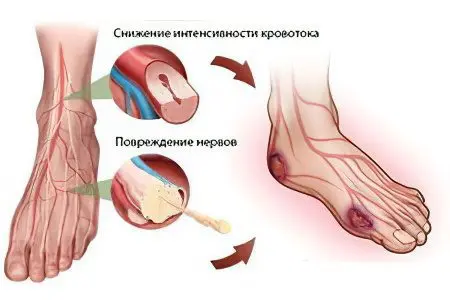
Clostridium normally lives in the intestines of domestic animals. From there, the bacteria get on clothes and human skin, on the ground. They do not pose a danger to people until they find themselves in an extensive crushed wound. The wound surface may not be very large, but the risk of introducing Clostridium remains if particles of soil or clothing of the injured person have entered the wound.
Most often, gas gangrene is diagnosed on the skeletal muscles, but in rare cases, with injuries to the abdominal cavity and intestinal wall, it affects the pelvic organs and the gastrointestinal tract. The most important condition for starting the pathological process is the absence of oxygenation in the wound, a violation of its oxygen supply. This is facilitated by difficult blood circulation in the injured area.
Features of anaerobic gangrene:
Causes of impaired oxygenation – too long applied tourniquet, damage to the main artery, chronic arterial insufficiency in history, massive blood loss.
During reproduction, clostridia produce exotoxins that destroy muscles, ligaments, skin, and blood vessels.
The gas formation provoked by them contributes to the rapid spread of the irreversible process of muscle and skin necrosis.
The general severe reaction of a person to intoxication of the body develops on the first day from the onset of infection.
The most massive lesion in gas gangrene occurs in the muscles of the buttocks and thighs. The infection spreads along the large vessels of the extremities, along the neurovascular bundles. Exotoxin directly affects thrombosis in veins and arteries, provokes paralysis and impaired microcirculation.
The most common causes of damage in anaerobic gangrene:
Gunshot wound;
Criminal termination of pregnancy;
Non-compliance with the rules of antisepsis during surgery or postoperative treatment;
Deep massive bedsores.
The incubation period for gas gangrene lasts from several hours to 15-20 days, most often from one day to one week. The shorter the incubation period, the more severe the course of the disease and the worse the prognosis of its development.
Symptoms of gas gangrene
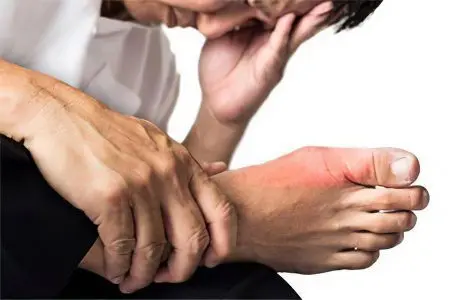
The disease begins rapidly, already on the first or third day after injury or injury, tissue edema develops, a cloudy discharge with gas bubbles and an extremely unpleasant odor is produced in the wound. Puffiness spreads rapidly, blisters appear on the skin with hemorrhagic contents inside, green spots. The limb becomes cold, the muscles take on the appearance of boiled meat, their fibers delaminate. For 10-12 hours, one of the types of Clostridium is able to destroy the subcutaneous tissue to the bones.
Growing symptoms of general intoxication of the body:
Cardiopalmus;
Hyperthermia up to 39-40°;
Muscle aches;
Rapid breathing;
Thirst;
Insomnia;
Headache;
Increased excitability or, conversely, depression;
Decrease in the amount of urine excreted, then its complete absence;
Crepitus (crackling) when pressed on damaged tissue.
In the blood, red blood cells are rapidly destroyed, anemia and hemolytic jaundice occur.
In its development, gangrene goes through 4 stages:
stage of delimited gangrene. Tissue edema and discharge are minimal, the wound is dry, there is pain, the skin is pale.
Distribution stage. The defeat and necrosis of tissues move along the limb, the pain becomes arching, the muscles are bled, the skin turns yellow, spots are visible on it.
Third stage. The pain decreases or stops altogether, the limb increases, grows cold, the pulsation stops. Puffiness and gases spread over a large area of the body, blisters with brown contents form on the skin.
sepsis stage. Intoxication of the body is significant, the wound is filled with pus, foci with purulent contents are fixed far from the initial introduction of bacteria.
If the patient does not receive timely assistance, death occurs in 2-3 days.
Clinical forms of gas gangrene and features of their course
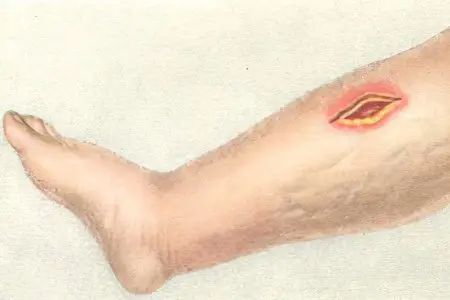
Symptoms of anaerobic gangrene depend on its form.
There are 4 forms of this disease:
Emphysematous, or classic form. Swelling of the tissue is small, a cadaveric smell emanates from the wound. There is no pus, exudate is not separated. Significant gas formation, severe pain syndrome are diagnosed. With the development of the disease, muscle tissue becomes greenish, the skin turns purple, and the pulsation of the artery disappears.
Edema-toxic form. Edema is growing rapidly, as a result of which the muscles are compressed. There is no pus, gas is released in a minimal amount. The skin around the wound is cold, the subcutaneous tissue first turns green, then turns brown, the tissues undergo irreversible necrosis.
Phlegmonous form. It has the most favorable prognosis of development, the area of damage is limited, it does not spread too quickly. There is pus in the wound, its blood supply is not disturbed.
Putrid or putrid form. The clinic of the disease is growing rapidly, soft tissues undergo extensive necrosis. A putrefactive substance with an exceptionally unpleasant odor is separated from the wound. With this form, gas comes out of the wound, the walls of the vessels are destroyed.
How is gas gangrene diagnosed?
The most accurate diagnostic method is the microbiological analysis of tissue biopsy of the lesion, aspirate from the wound, blood culture. Since the study takes a long time, and the patient needs immediate medical attention, laboratory diagnosis is inferior in importance to the assessment of the clinical picture of the disease. When conducting ultrasound and x-rays, you can see gas bubbles in the affected tissues.
When diagnosing, a doctor takes into account the rate of increase in swelling of tissues and their necrosis, the presence of a crunch (crepitus), the color of the skin and muscles.
Therapeutic and surgical methods for the treatment of gas gangrene
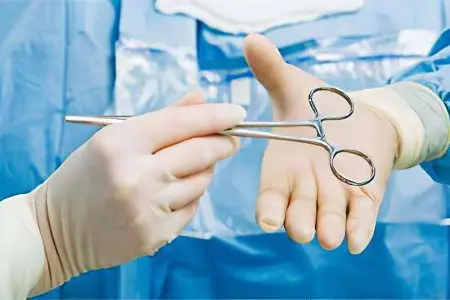
An urgent measure when symptoms of gas gangrene are detected is the dissection of the wound channel. Deep stripe incisions are made along the limb, then necrotic muscles are excised. A loose drainage of manganese and hydrogen peroxide is applied to an open wound. This bandage is changed several times a day, when the patient’s condition improves, they do it daily. During the entire course of treatment, the patient observes bed rest, eats high-calorie foods.
If gangrene takes a severe course, there is a massive melting of tissues, reaching the bones, the doctor decides on amputation. The surface of the wound after amputation is left open, lamp incisions are made nearby, wound drainage is established with hydrogen peroxide and manganese solution.
From the very beginning of complex therapy, antibiotic treatment is carried out.
Drugs of choice:
Penicillin combinations with aminoglycosides;
Cephalosporin combinations with aminoglycosides;
Clindamycin;
Rifampicin;
Dioxydin;
Chloramphenicol;
Metronidazole.
Additionally, droppers with albumin, blood plasma, solutions of proteins and electrolytes, the introduction of anti-gangrenous serum, blood transfusion, applications of anaerobic bacteriophage on the wound are prescribed. To reduce the concentration of bacteria, treatment in a pressure chamber is used.
Prevention of the spread of gas gangrene
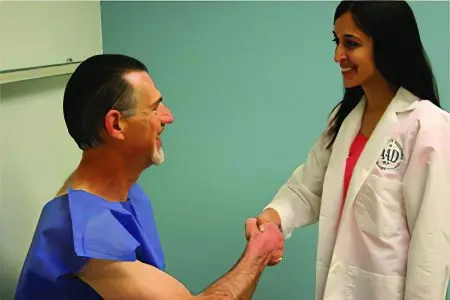
To prevent gas gangrene from occurring in patients with crushed and contaminated wounds, they are immediately treated with excision of non-viable tissues. A patient with such lesions is prescribed broad-spectrum antibiotics.
It is very important when treating a patient with gas gangrene to observe strict antiseptic measures. For him, a personal nursing post is created, the patient is placed in a separate ward. All manipulations with it are performed by medical staff in disposable gloves, doctors and nurses put on special clothes, shoe covers.
The used tool, the patient’s linen is processed in a dry-heat cabinet or in a sterilizer. Dressing material after use is subject to immediate incineration. Boiling is not capable of destroying Clostridium spores, so this method of disinfection is not used for gas gangrene.
To prevent the spread of nosocomial infection, it is necessary to carefully observe all the norms of sanitary and hygienic treatment of rooms and objects in contact with the patient.









